blog
How to Tell if Baby is Hungry or Full: Use Responsive Feeding

We asked Registered Dietitian, Nicole Silber, RD, CSP, CLC, for her take on the USDA’s 2020-2025 Dietary Guidelines for Americans. Nicole is a board-certified specialist in pediatric nutrition and has worked with hundreds of children with chronic medical conditions, food allergies, picky eating, oral-motor and sensory processing disorders, breastfeeding, gastrointestinal conditions, prematurity and obesity.
As a pediatric nutritionist, I often get asked, “How much does my baby need to eat?” The short answer is – all babies are different! A better approach to successful mealtimes is to ditch the focus on quantities and portions, and to focus on responsive feeding.
Responsive feeding is a feeding style that focuses on responding to natural hunger and fullness cues that an infant or young child displays. Rather than delivering expected or set quantities of food, (a full jar of this, 12 spoonfuls of that…) it puts an individual child’s needs and bodies first. Responsive feeding promotes healthy eating habits and even establishes a positive feeder-eater dynamic–gone are the days of “force feeding!” When a child is empowered to determine how much she wants to eat at a sitting, she learns more about her own satiety (fullness), which can prevent over and under eating. I was so happy to see that the 2020-2025 Dietary Guidelines for Americans did not just offer guidance on what or “how much” to feed children but focused on how to individually feed them.
Unlike adults who need a consistent number of calories and nutrients daily, the nutritional needs of babies and toddlers fluctuate depending on many factors, including growth spurts and lulls. It is even common for babies and toddlers to eat less and be less interested in food on certain days, particularly when they are teething. I find it generally unhelpful to advise recommended amounts of food, because most babies just eat what they need to. It is very possible, on a given day, your baby will want to eat less or more of a prescribed amount, and that’s totally okay, if your child’s pediatrician has no prior concerns about his or her growth.
Babies need different amounts of “complementary” or solid foods, depending on their age, weight and amount of breast milk or formula they are drinking. Plus, not all food is created equal! An apple puree has a vastly different nutritional panel than a puree made of apples with oatmeal and peanut butter mixed in, so I would expect a child to eat different amounts of these two foods. (This is another reason why I like to focus on the quality and makeup of the meal, and not the quantity of the meal.)
Have successful mealtimes with baby using responsive feeding
Rather than having a set portion in mind to serve, closely observe your child during mealtimes and interpret his or her hunger and fullness cues. Babies are not verbal, but they tell us a lot through their body language. It is important to listen to what your baby is trying to tell you. This will help them feel safe, confident, and empowered. Your job as a parent is to support them during eating and decide for them what foods to offer, but it is your baby’s job to tell you how much he or she wants to eat. Getting in that one “extra spoonful” of food will not help your baby sleep, be calm, or be any better nourished. In fact, it can do the opposite. It can tell baby that he or she does not have a say in how much he or she eats.
Babies knows a lot more about their bodies than we think!
🐵 Signs that baby or toddler is hungry and wants more food
- Puts hand to mouth
- Turns head towards breast or bottle
- Puckers, smacks, or lips
- Clenches hands
- Reaches or points to food
- Opens her mouth when offered food
- Gets excited when she sees food
- Uses hand motions or sounds to let you know she is still hungry
🙊 Signs that baby or toddler is full, and mealtime is over
- Closes mouth
- Turns head away from breast, bottle or food
- Relaxes hands
- Pushes food away
- Closes her mouth when food is offered
- Uses hand motions or makes sounds to let you know she is full
- Falling asleep at the highchair
Nicole is the creator of Tiny Tasters, a series of on-demand and live classes that teach parents everything they need to know about how to feed their babies and toddlers. Prior to her current roles she was a clinical nutritionist at the Morgan Stanley Children’s Hospital at New York-Presbyterian/Columbia and at NYU Langone/Fink Children’s Ambulatory Care Center. Nicole lives in New York with her husband and her toddlers, Lily and Luna!
To read more about the Dietary Guidelines for Americans 2020-20205, click here.


